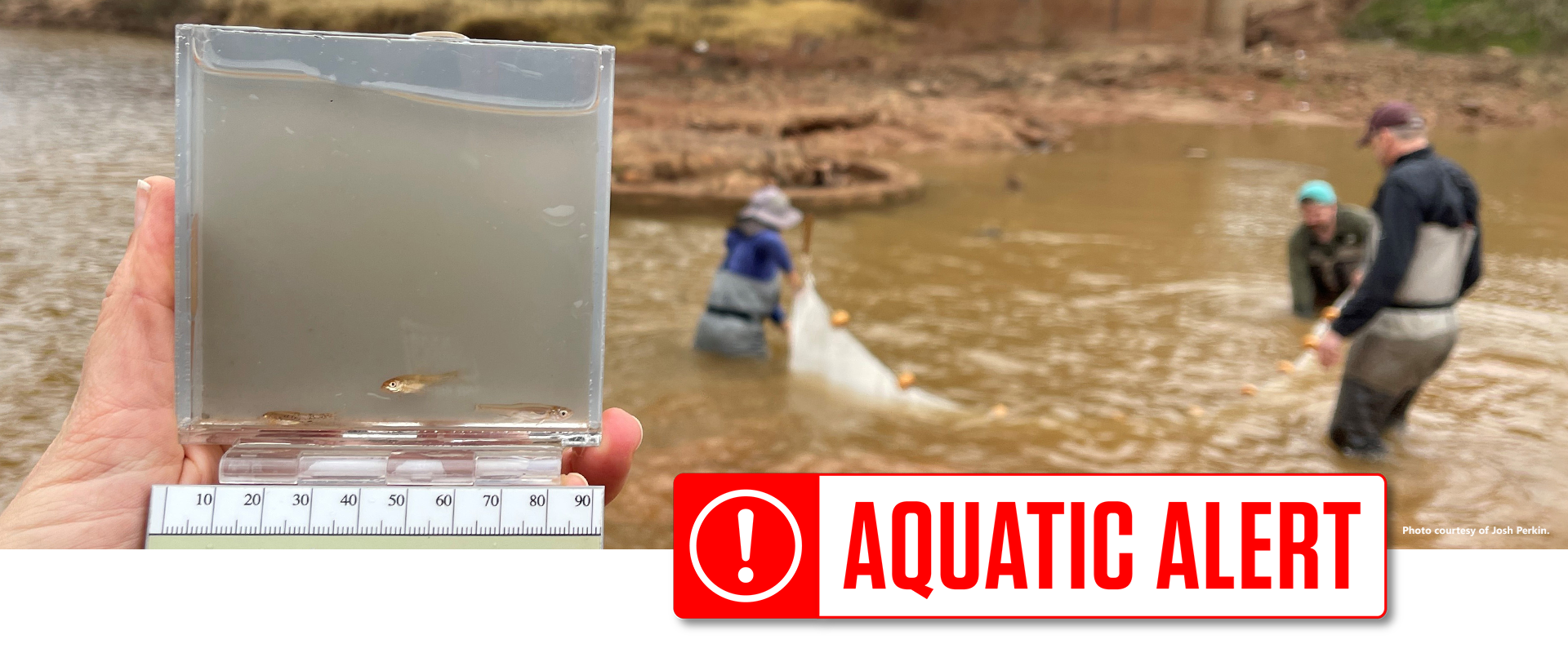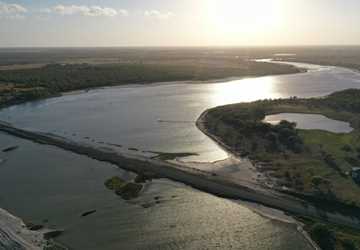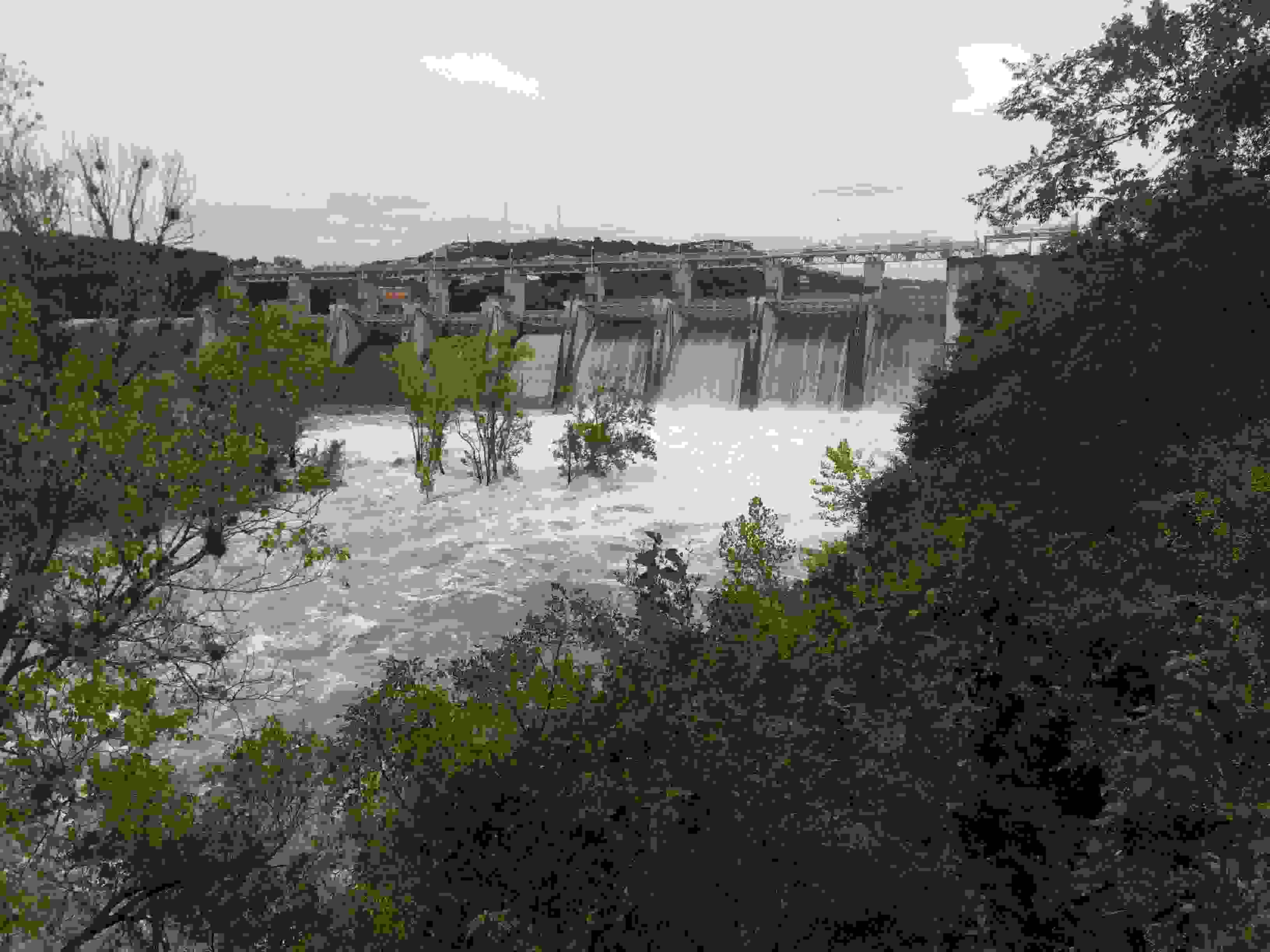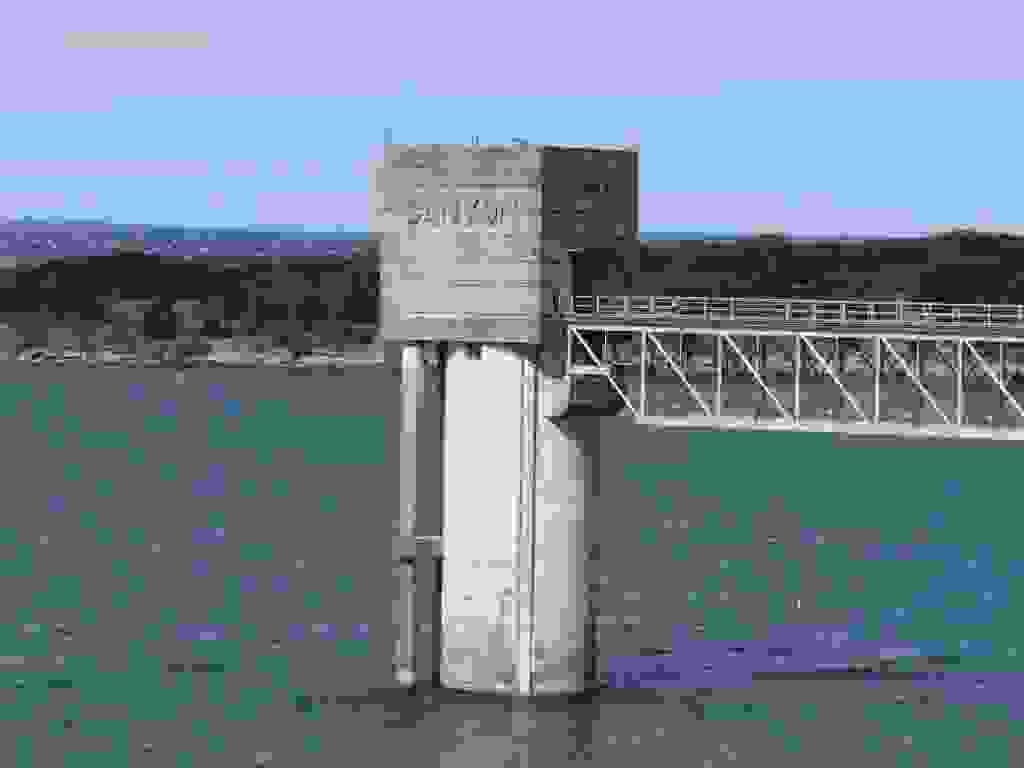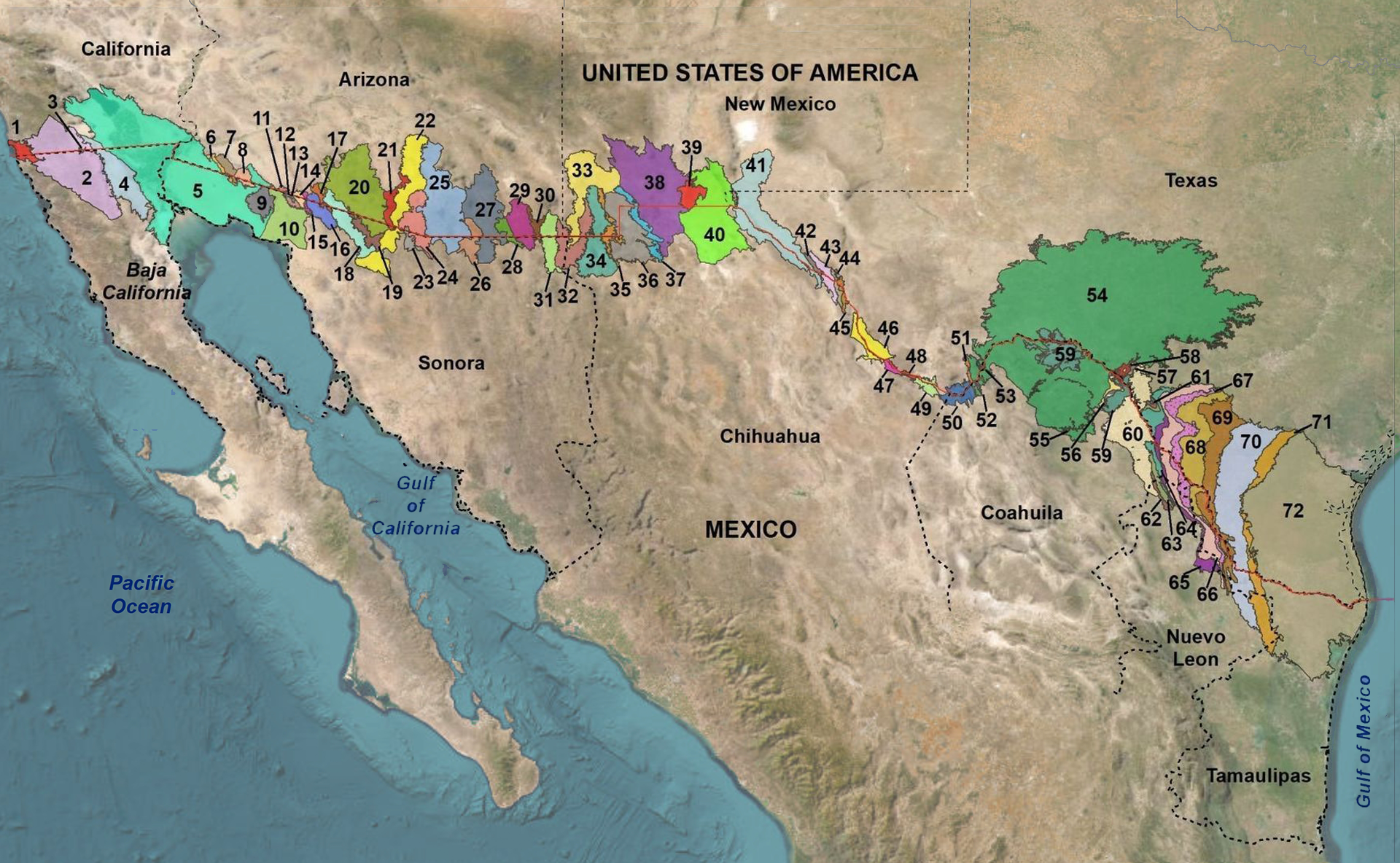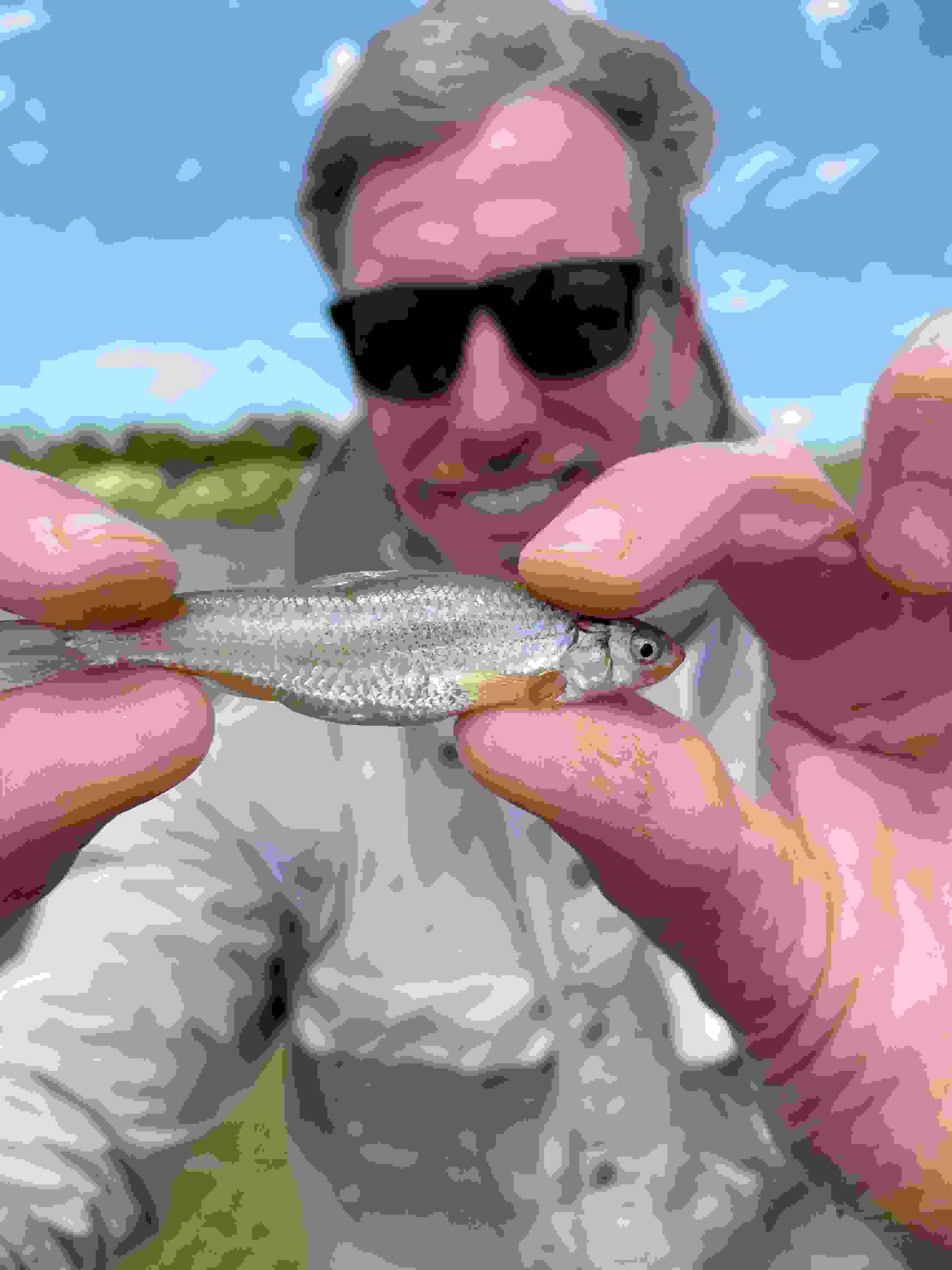Small fish such as shiners and minnows can have big implications for water quality and quantity in Texas rivers and streams. While these fish might seem inconsequential, they play a key role in ecosystems and for researchers studying the intersections of ecology and water management.
Joshuah Perkin, Ph.D., studies the ecosystem services that these fish provide. He is an assistant professor and fish ecologist in the Department of Ecology and Conservation Biology in the College of Agriculture and Life Sciences at Texas A&M University.
Perkin and others with similar research focuses recognize the value of fish as ecological indicators. Scientists use these fish to understand the long-term consequences of short-term decisions humans make about water.
“As researchers, we think of fish as providers of goods and services to humans on multiple fronts,” he said. “Whether we realize it or not, we benefit from ecosystems in their natural state.”
Small fish cannot flourish without sufficient water in streams, so these fish populations tell scientists a lot about the health of an ecosystem and the availability of water in an area, Perkin said. This can help scientists and policymakers develop strategies to manage water resources more effectively in the future.
Fish can work the same way. They are much more sensitive to changes in water availability than humans are.
Tiny fish as indicators function similarly to canaries in coal mines, he said. Canaries are extremely sensitive to carbon dioxide and other toxic gases, so miners kept the birds in cages while they worked. If the birds became sick or died, it would warn the miners and give them time to evacuate.
“Fish can work the same way,” Perkin said. “They are much more sensitive to changes in water availability than humans are.”
Estimated reading time: 5 minutes
Scientists look to small fish that help indicate major water issues
Want to get txH20 delivered right to your inbox? Click to subscribe.
Perkin holds one of his favorite minnows, the Plains Minnow. Photo courtesy of Josh Perkin.
Fish as indicators
The pelagic broadcast spawning guild of fishes is just one example of how scientists can use these small fish species to detect water scarcity. To an average observer, these fish may seem trivial, but water professionals are watching their every move.
When these fish spawn, or reproduce, they use external fertilization and blast gametes out into the water column to fertilize eggs, Perkin said. After the eggs are fertilized, they swell with water and become larger as they drift downstream.
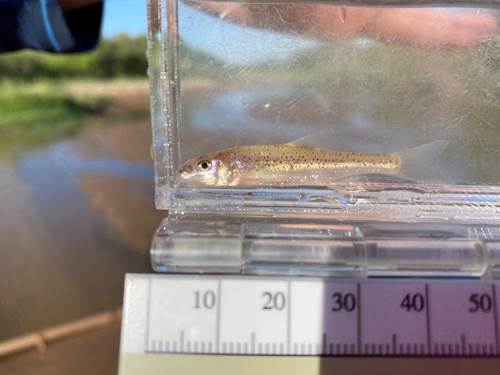
“When the eggs do not have sufficient water to drift downstream, they will settle to the bottom and suffocate in the sand; they need water pushing them down the stream to live,” he said.
If fish like this do not have reproductive success every year, their populations will decline. This can alert researchers to desiccation in certain areas and give leaders the opportunity to address the issues before the water is gone completely.
“There are fish species like this everywhere,” Perkin said. “Most people are unaware that they play such an important role.”
The Arkansas River Shiner was one of the first major indicator species recognized in the United States.
As agricultural irrigation practices increased in the mid-1900s and the United States started large-scale water extraction for irrigated agriculture, the Arkansas River Shiner’s population began declining, he said. By the 1960s, the shiner was gone from the places it naturally occurred, but there were no significant issues with water depletion in the Arkansas River until 20 or 30 years later.
“During this time, humans forced the groundwater levels away from the surface, intercepted melt water and changed river flows, all of which had an immediate effect on the Arkansas River Shiner,” Perkin said. “If we had paid attention to fish as an indicator, we could have adjusted our management practices.”
Using fish for future flow plans
While the information these fish can provide is key, what policymakers do with it is equally important, he said, and his team has shifted to studying the relationship between ecology and water management.
Reservoirs are very important to human life; understanding how to release water in those reservoirs and manage water levels in the rivers downstream of reservoirs requires a lot of information from ecology and the environment.
Perkin’s current project is funded by the National Science Foundation, in collaboration with researchers at the University of Oklahoma. His team wants to understand water conservation incentives, how water users make decisions about water use and how they can be incentivized to use less water during times of drought.
“Our research guides water management decisions so that we can use water in a more sustainable way,” Perkin said. “We are not managing it to the depletion of the resource, and instead making it available for generations to come. Our research is linking ecology to management.
“Reservoirs are very important to human life; understanding how to release water in those reservoirs and manage water levels in the rivers downstream of reservoirs requires a lot of information from ecology and the environment,” Perkin said.
Environmental flows and state-regulated flow regimes are included in Perkin’s research. The Texas Water Development Board contracts and funds numerous projects surrounding the study of environmental flows.
The release of water is referred to as a flow regime. When and where fish spawn depends on the flow and requires management. Understanding this is vital for Perkin’s research and the future of ecology, he said, and maintaining the populations of fish in rivers is heavily dependent on flow regimes.
“Water in the state of Texas is a finite resource. We have a growing population and a growing thirst for water. We need to utilize this research so our resources are available for years to come.”
Explore this Issue
Authors
Madalyn Richards was a communications intern at the Texas Water Resources Institute, creating social media content and writing for TWRI’s various publications.

